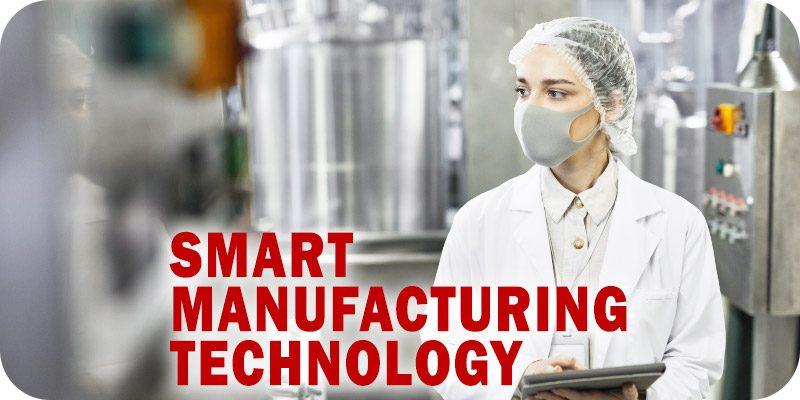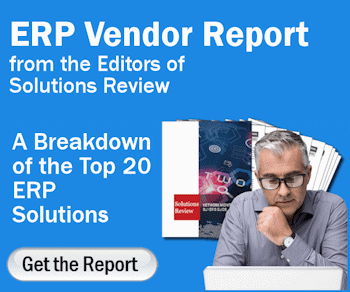Using Smart Manufacturing Technology to Meet Regulatory & Partner Requirements


As part of Solutions Review’s Contributed Content Series—a collection of articles written by industry thought leaders in maturing software categories—Anthony Murphy, the VP of Product Management at Plex, explains how smart manufacturing technology can help companies meet regulatory and partner requirements.
The scope and definition of compliance are increasing to include broader subjects of quality, security, and sustainability, and the rate of change in each area is accelerating. Many vertical industries within manufacturing must comply with regulatory requirements that address various aspects of each area, including plants producing goods for the food and beverage, healthcare, and aerospace industries, among others.
Regardless of industry, manufacturers are also being pushed to improve sustainability by oversight organizations such as the United States Environmental Protection Agency (EPA). Finally, manufacturers must also comply with standards set by business partners and customers, who are pressuring manufacturers to adopt solutions and strategies that enable increased sustainability, security, and dependability.
Complying with many regulations, standards, and requirements is a significant concern for any manufacturer, especially as the rate of change surrounding compliance requirements increases. Companies that don’t think of themselves as participants in a “highly regulated” industry may soon find that they must comply with new requirements around security and sustainability.
Losing compliance control can result in hefty fines from regulatory agencies, loss of business opportunities, and even critical data breaches resulting in information theft or ransom because of a cybersecurity incident. Efficient compliance necessitates the adoption of automation and visibility-enabling smart manufacturing technology that can track, connect, and analyze information from across the enterprise in compliance with security standards.
Security & Sustainability Compliance Challenges
Security and sustainability concerns are increasing as cyber-attacks become more prevalent and environmentally conscious consumers and business partners demand more responsibly produced products. In response, companies and investors are significantly increasing cybersecurity and sustainability investment budgets.
From a security perspective, the rise of ransomware is an especially troubling trend. Ransomware is malware that encrypts an organization’s data until a ransom payment is received. Introducing malware to a facility’s IT environment can be triggered by acts as simple as downloading a new app or connecting an outside laptop to the network.
Manufacturers must take careful steps to prevent ransomware infiltration by updating software and systems to meet the latest security requirements. This is especially critical as the risk of cyber-attack increases for manufacturers. Recent research shows manufacturers were the most targeted cyber-attack sectors in 2021 and 2022. However, even after organizations have invested in new technologies and systems to enable cybersecurity, malicious or negligent insiders can still bring down an entire enterprise by introducing ransomware via physical media or email attachments.
When it comes to sustainability, corporate board members, business partners, and customers now fully expect environmental, social, and governance (ESG) policies to be a priority. The business benefits alone of increasing sustainability are sure to drive increased requirements. For example, products with an on-package sustainability claim delivered nearly $114 billion in sales in 2019—a 29 percent increase from 2013. Legacy manufacturing systems and software make monitoring and enabling ESG success at levels necessary for compliance today much more complex and costly. In addition, the cost of ESG initiatives can be significant and discourage small-to-medium enterprises from pursuing sustainability goals. Thankfully, the same smart manufacturing technologies that enable regulatory compliance through advanced automation and tracking capabilities can also support ESG initiatives.
Automating Security & Compliance with Smart Manufacturing
Achieving compliance is a necessary operation for nearly every industry. Still, it doesn’t have to be a manually driven uphill slog, especially for manufacturers facing new requirements around sustainability and quality, who may be unaccustomed to compliance with external standards. Manual activities and tracking increase the cost and overhead expense of compliance and expose manufacturers to multiple obstacles in achieving compliance, including human error, time-lagged data, data bias, and other problems. Organizational processes and structures, such as complex approval hierarchies, can impede a company’s journey to compliance.
Smart manufacturing technologies, tools, and systems eliminate the risks of manual compliance operations by connecting data from across the enterprise for real-time analysis and flagging insights and actionable next steps to the relevant roles within the organization. With smart manufacturing technology, processes like change orders and design change approvals can be automated to speed up the process. Further, smart manufacturing technologies have security tools and standards built into the software, removing the risk of non-compliance through negligence or human error.
Automation-enabling technology drives operational rigor, governance, and control, ensuring that the correct process steps are followed, by the appropriately skilled and trained employees, using the right tools, materials, and quality checks. This enables real-time documentation and information updates and ensures work orders are updated along with instructions and other critical information to keep production lots aligned with compliance requirements.
In the event of an issue that requires a production halt, a smart manufacturing system automatically sends an alert addressing the specific problem, the associated lot, and the correction that needs to be made. The system simultaneously documents the process and submits required forms to the appropriate authorities, flagging any exceptions for review. All these steps can be executed efficiently and quickly without a single manual activity.
When it comes to standard security compliance, smart manufacturing systems put security at the center of their operations and product strategy, ensuring they are always ahead of the latest threats and trends. Smart manufacturing systems use capabilities like hardened firewall clusters to track changes and monitor threats. The connected, cloud nature of the system automates update processes, ensuring all anti-virus, spyware, and intrusion detection tools are functioning as intended based on the latest advances in security technology.
Multi-layered security protocols are always on, constantly working in the background of standard business operations to defend against ransomware and other intrusions, offloading the burden of cost and the risk of non-compliance, enabling manufacturers to conduct business as usual confidently.
Vetting & Deploying Smart Manufacturing Solutions
Many types of smart manufacturing software can be used in standalone, modularized components to accomplish specific goals or in a suite of solutions to support end-to-end operations. The categories of smart manufacturing systems span the typical scope of traditional manufacturing business systems, including the core systems of enterprise resource planning (ERP), manufacturing execution (MES), quality management (QMS), as well as supply chain planning (SCP), and asset performance management (APM), among other more niche functions.
When evaluating smart manufacturing solutions, it can be beneficial to make a list of requirements and critical capabilities to visualize every aspect of the decision. Engage stakeholders from all facets of the business to help identify areas of risk and weakness through internal audits of processes. This helps to identify bottlenecks and areas for improvement, which should be added to the list of capabilities the solution will need to offer. This pre- and post-buy-in checklist defines the requirements of a solution and the logistical progression of platform implementation, and post-implementation measures of success.
Once the list is developed, its items should be prioritized by importance and criticality to achieving desired goals. The operations, challenges, and technologies involved in achieving the goals of compliance, security, and sustainability should be at the top of the list. This enables manufacturers to tackle the highest-value items first, with a planned strategy for deploying other technologies and optimizing additional operations across the enterprise.
A Smarter Approach to Regulatory & Partner Compliance
Smart manufacturing connects previously disparate systems and solutions across the enterprise to enable the automation, advanced analysis, and optimization of comprehensive manufacturing processes, with security built-in and continuously enhanced and improved upon.
When applied to achieving compliance with regulatory, security, and partner requirements, smart manufacturing technology enables plants to conduct business as usual with the confidence that ESG and security standards are being met—allowing team members to focus on revenue-driving and agility-enabling activities rather than worrying about potential penalties for non-compliance. The ability to focus critical thinking and problem-solving on growth is essential in today’s highly competitive industry when new obstacles and challenges seem to appear every week.






















